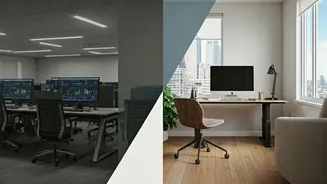The Return Begins
As the COVID-19 pandemic waned, many companies began to reassess their remote work policies, leading to a significant shift. The initial embrace of remote work,
born out of necessity, gave way to a reevaluation of workplace strategies. Employers started calling employees back to the office, driven by various factors. They aimed to boost collaboration, strengthen company culture, and increase control over their workforce. This shift, however, didn't come without its share of challenges and resistance from employees who had grown accustomed to the flexibility of working from home.
Resistance to Change
The transition back to in-office work has faced considerable pushback from employees. For many, the advantages of remote work were significant, including greater work-life balance and the elimination of commute times, saving both time and money. Some employees discovered that they were more productive when working remotely. The flexibility also allowed some to manage other responsibilities, such as childcare or elder care, more effectively. This resistance is a reflection of a changing perspective on the nature of work, with employees placing a higher value on autonomy and personal well-being. This clash creates a tension between the needs of the company and the expectations of its employees.
Gender Pay Gap Widens
One significant consequence of the return-to-office trend is its impact on the gender pay gap. The increased pressure to work in the office often disproportionately affects women. Women are more likely to shoulder caregiving responsibilities, and the need to be physically present at the office makes it harder for them to juggle these duties. The push back to in-office work makes it difficult for women to balance their work and family obligations. They may be forced to make tough decisions, such as reducing work hours, which can hinder career advancement and lead to a widening of the pay gap. Companies need to consider these issues and work towards solutions to support a more equitable work environment.
The Future of Work
The debate over remote work versus in-office work is ongoing, and it's reshaping the future of the workplace. Businesses are trying to find the ideal balance between the need for in-person collaboration and the benefits of remote work. Hybrid models, combining both remote and in-office work, are becoming increasingly popular as a compromise. The future might see more companies offering flexible work options that cater to employee preferences. This could include remote work, flexible hours, or hybrid models. The evolution of the workplace is driven by technology, changing societal norms, and the need to retain and attract skilled workers. The companies that are most successful will be those that adapt to these changes and prioritize the well-being and needs of their employees.












